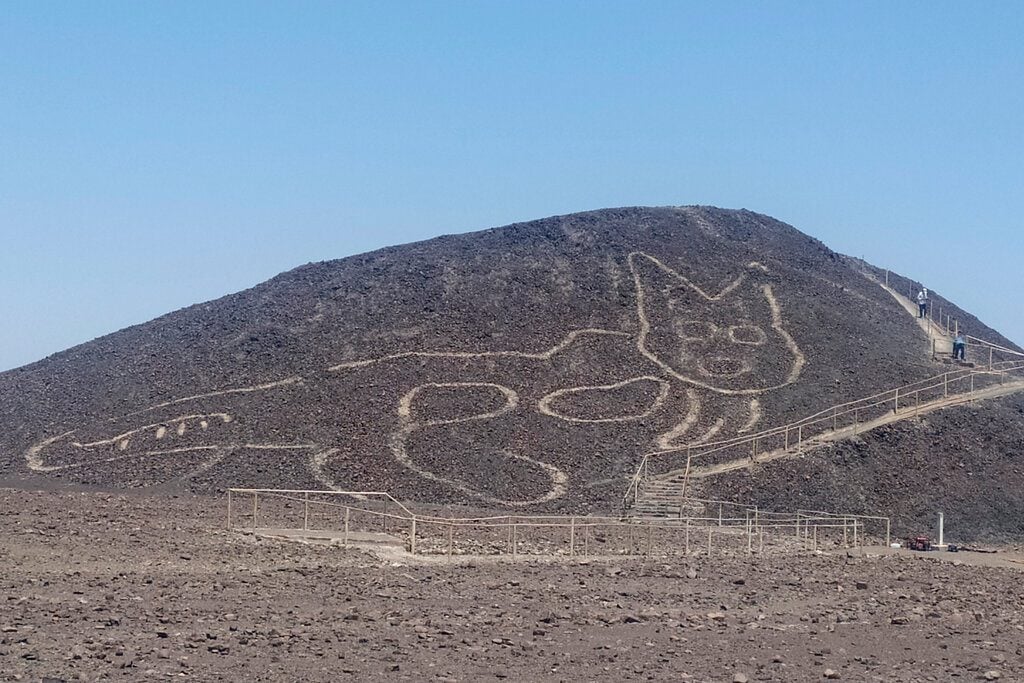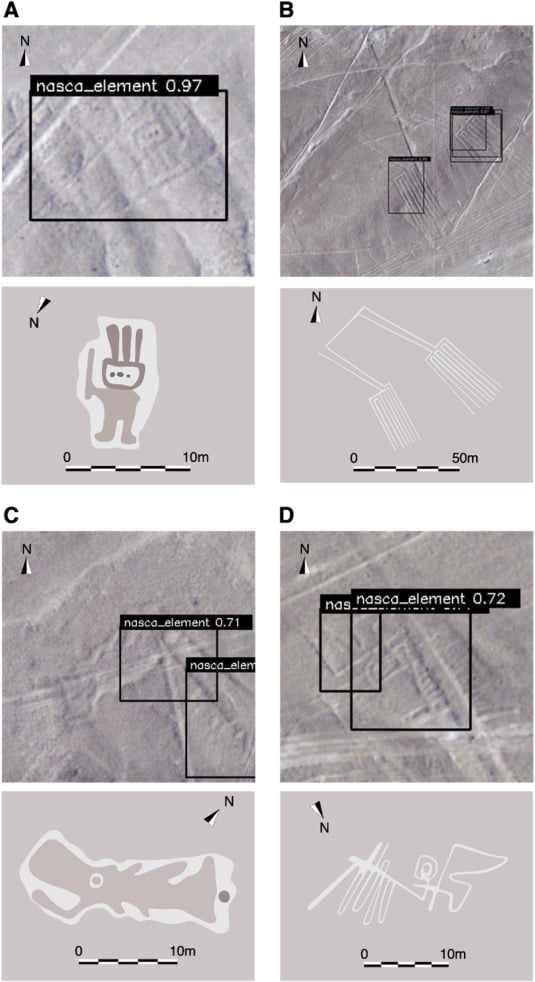Archaeology & History
Archaeologists in Peru Used A.I. to Discover Ancient Geoglyphs of Killer Whales, Two-Headed Snakes, and Other Creatures Carved Into Land
Researchers say the new method identifies geoglyph candidates 21 times faster.

Researchers say the new method identifies geoglyph candidates 21 times faster.

Richard Whiddington

Archaeology may be focused on illuminating the past, but it has long deployed cutting-edge technologies in its pursuits. Recent years have seen archaeologists use robots, LiDAR, drones, and now artificial intelligence.
Researchers from Japan’s Yamagata University have used the technology to discovery four new Nazca geoglyphs in Peru. They were carved into the rugged landscape of modern-day southern Peru between 500 BCE and 500 C.E. by the ancient Nazca peoples. Numbering in the hundreds, they depict a myriad of creatures, real and fantastical, including killer whales, two-headed snakes, llamas, and curious humanoid figures.
The latest discoveries, which were published in July’s Journal of Archaeological Science, are an extension of work that Yamagata’s researchers began in 2016 (though initial surveys started in 2004). First, they used aerial photographs with a ground resolution of .1 meter per pixel to capture the entire area of the Nazca plateau, around 150 miles squared. Next, through a laborious process lasting five years, researchers identified geoglyphs manually, often checking their finds with onsite surveys. This last step has involved collaborating with IBM to empower A.I. to uncover the geoglyphs they’d missed in previous searches.

The four new Nazca geoglyphs found using A.I. in Peru. Image: Journal of Archaeological Science.
The newest Nazca geoglyphs show a humanoid figure holding a club, a wide-mouthed fish, a 255-foot-long pair of legs, and a bird (skeletal and abstract in an almost Alex Calder-like way).
“Our approach allows DL [Deep Learning] to learn representations of images with better generalization performance, enabling the discovery of targets that have been difficult to find in the past,” the researchers wrote in the paper. “Our method contributes to archaeology by establishing a new paradigm that combines field surveys and AI, leading to more efficient and effective investigations.”

Geoglyphs can be categorized into three main types: figurative, geometric, and lineal. Image: Journal of Archaeological Science.
The researchers believe using A.I. to identify new geoglyph candidates is 21 times faster than the previous method of using the naked eye. Given Yamagata University’s most recent investigation focused on a limited northern area of the Nazca plateau, expect its machine learning models to make further discoveries in the near future.
The Nazca geoglyphs were first found by Peruvian archaeologist Toribio Mejia Xesspe in 1927 and received renewed academic attention in the 1980s. In 1993, the Nazca geoglyphs were registered as a UNESCO World Cultural Heritage Site.